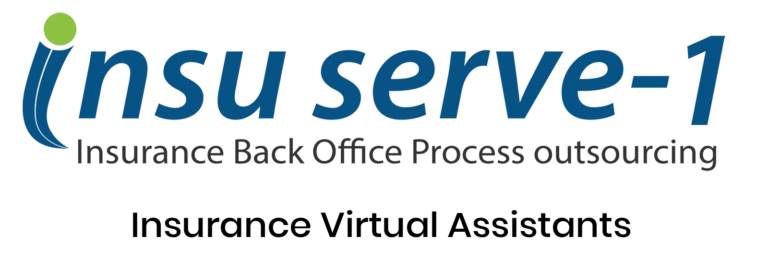Cyber attacks and data breaches targeting insurance agencies have been on the rise in recent years. As more customer data is stored digitally, cybercriminals see insurance agencies as prime targets for theft and extortion. According to one 2021 survey, the insurance industry saw a 20% increase in cyber attacks compared to the previous year, with phishing and ransomware being the most common attack methods.
This poses a significant challenge for insurance agencies, who hold sensitive customer data like Social Security numbers, driver’s license information, and financial records. A breach of this data can result in massive financial losses and irreparable damage to an agency’s reputation. Customers expect their insurers to keep their personal information safe, so any failure to do so can quickly erode consumer trust.
At the same time, cybercriminals are using increasingly sophisticated tools and tactics to breach insurance agency defenses. Data thieves sell stolen information on dark web marketplaces, profiting off the misuse of personal data. Some thieves use ransomware to encrypt agency data, demanding large payments in cryptocurrency to unlock it. Others exploit security vulnerabilities or use social engineering tactics to trick employees into handing over credentials that provide access to databases.
As data breaches carry severe consequences, addressing cybersecurity risks has become an urgent priority for every insurance agency. This article examines one of the key data security challenges agencies face today – the threat of data theft and extortion – as well as strategies to detect and mitigate this rising threat.
Data Theft Methods
Cybercriminals use various methods to steal sensitive data from insurance agencies. Two of the most common approaches are:
Direct Theft By Hackers
- Hackers can break into an insurance agency’s systems and databases to steal policyholder information directly. Methods include phishing attacks, exploiting vulnerabilities, malware infections, and brute force hacking of databases. Once inside the system, hackers will extract large databases containing personal data, financial information, and other records.
- Hackers may infiltrate the network through unpatched software vulnerabilities, weak credentials, or by tricking employees into installing malware. Poor cybersecurity practices make data breaches easier.
- Stolen data can then be sold on dark web marketplaces, generating profits for the hackers while exposing customers to identity theft and fraud.
Ransomware Attacks And Extortion
- Ransomware is a type of malware that encrypts files and systems, locking out the agency until a ransom is paid. Cybercriminals threaten to delete or publish sensitive data unless the ransom is met.
- Agencies with inadequate backups can feel pressured to pay the ransom to regain access. However, paying does not guarantee the data won’t still be sold or leaked.
- Ransomware gangs exfiltrate data before encrypting systems, using the threat of exposure for extortion. The data may be sold to other groups even if the ransom is paid.
- Attackers often search for highly sensitive data that could be damaging if made public. Policyholder data is lucrative, as it can enable various frauds.
- Ransomware attacks can be devastating to agencies who then suffer reputational damage, lawsuits, and regulatory penalties if data gets out.
Impact Of Data Thefts
Data thefts can have severe consequences for insurance agencies. Financial losses often occur from the extortion payments demanded by cybercriminals who threaten to publicly release the stolen data. Even if a ransom is paid, the criminals may release the data anyway.
Reputational damage frequently happens after a data breach becomes public knowledge. Customers lose trust in agencies that failed to protect their personal information. The agency’s brand suffers, resulting in loss of business, referrals, and new sales.
Lawsuits and regulatory fines present further financial fallout. Customers may take legal action for privacy violations. Regulators often impose heavy fines for noncompliance with data security laws. In the United States, state insurance commissioners can levy penalties in the millions.
Data breaches undermine an insurance agency’s competitive position. Competitors without breaches can tout their superior data security to win over customers. The affected agency must divert resources to security improvements, rather than growth initiatives. Loss of proprietary data also erodes competitive advantages.
In summary, data thefts lead to substantial financial, legal, reputational, and competitive impacts for insurance agencies. Proactive prevention and swift response are crucial to mitigate the potential damage.
Preventing Data Theft
Insurance agencies can take several steps to prevent data theft and minimize the impact if it does occur:
Employee Training
- Conduct regular cybersecurity training for all employees, especially those handling sensitive customer data. Training should cover social engineering risks, proper password policies, and how to spot suspicious activity.
- Ensure employees understand policies around customer data access, storage, and transmission. Clearly outline consequences for policy violations.
- Train employees how to identify and report potential security incidents or data breaches.
Strong Access Controls and Passwords
- Require strong, complex passwords that are frequently updated for all systems containing customer data. Utilize multi-factor authentication where possible.
- Limit access to sensitive systems and data to only employees who need it for their job. Monitor access logs for anomalies.
- Implement the principle of least privilege to restrict unnecessary access.
Encryption of Sensitive Data
- Encrypt all sensitive customer data in transit and at rest. This includes data stored on servers, laptops, mobile devices, email, etc.
- Regularly ensure encryption methods remain strong and up to date as technology evolves.
Backup and Recovery Planning
- Maintain current backups of critical systems and data, stored both locally and in the cloud. Test restores regularly.
- Have an incident response plan that covers detecting breaches, assessing damage, restoring data, and communicating with customers, regulators, and law enforcement.
- Practice crisis scenarios to test and refine your response strategy for data breaches or cyber attacks. Planning ahead will enable faster recovery.
By taking a multi-layered approach to security and being prepared, agencies can greatly reduce risks from data theft and cybercrime. Vigilance and adaptation are key in this ever-evolving threat landscape.
Responding To Data Thefts
If a data theft incident occurs, insurance agencies need to respond swiftly and effectively. Here are some key steps to take:
- Notify customers and authorities – If sensitive customer data has been stolen, customers have a right to know about it as soon as possible. Breach notification laws usually require notice within 30-60 days. It’s also important to notify law enforcement and cybersecurity authorities.
- Offer credit monitoring – To help customers deal with potential identity theft, agencies should offer free credit monitoring services for 1-2 years. This allows customers to monitor their credit reports for suspicious activity.
- Investigate root cause – A forensic analysis should be conducted to understand how the breach occurred and what vulnerabilities exist. This is key to prevent future data thefts.
- Improve security controls – Based on the investigation findings, agencies need to implement security improvements. This may involve updating software, firewalls, encryption methods, access controls, and security policies. Ongoing staff training is also important.
By taking these steps, agencies can demonstrate responsibility and transparency. While data thefts inevitably cause headaches, a prompt and thorough response is the best way to maintain customer trust. With vigilance and learning from each incident, agencies can strengthen their defenses over time.






























